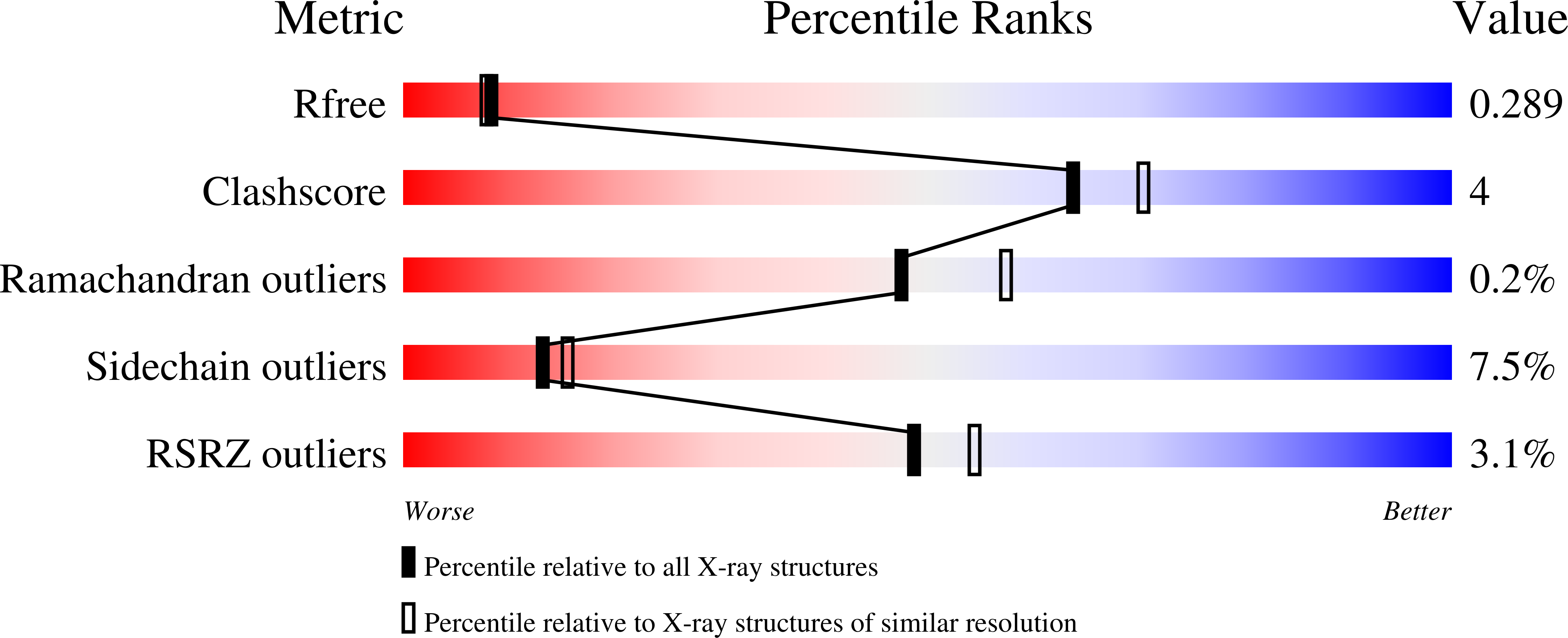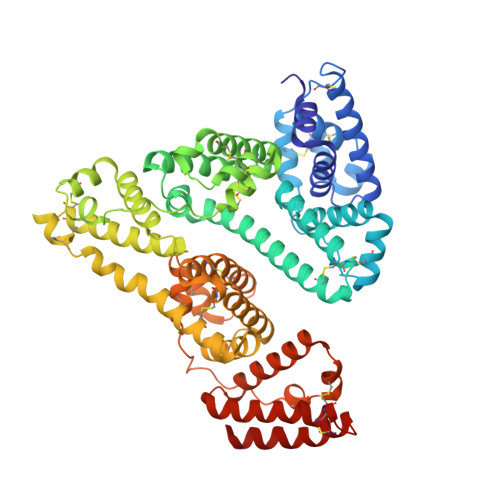Unveiling the binding mode of perfluorooctanoic acid to human serum albumin.
Maso, L., Trande, M., Liberi, S., Moro, G., Daems, E., Linciano, S., Sobott, F., Covaceuszach, S., Cassetta, A., Fasolato, S., Moretto, L.M., De Wael, K., Cendron, L., Angelini, A.(2021) Protein Sci 30: 830-841
- PubMed: 33550662
- DOI: https://doi.org/10.1002/pro.4036
- Primary Citation of Related Structures:
7AAE, 7AAI - PubMed Abstract:
Perfluorooctanoic acid (PFOA) is a toxic compound that is absorbed and distributed throughout the body by noncovalent binding to serum proteins such as human serum albumin (hSA). Though the interaction between PFOA and hSA has been already assessed using various analytical techniques, a high resolution and detailed analysis of the binding mode is still lacking. We report here the crystal structure of hSA in complex with PFOA and a medium-chain saturated fatty acid (FA). A total of eight distinct binding sites, four occupied by PFOAs and four by FAs, have been identified. In solution binding studies confirmed the 4:1 PFOA-hSA stoichiometry and revealed the presence of one high and three low affinity binding sites. Competition experiments with known hSA-binding drugs allowed locating the high affinity binding site in sub-domain IIIA. The elucidation of the molecular basis of the interaction between PFOA and hSA might provide not only a better assessment of the absorption and elimination mechanisms of these compounds in vivo but also have implications for the development of novel molecular receptors for diagnostic and biotechnological applications.
Organizational Affiliation:
Department of Biology, University of Padua, Padova, Italy.


















